- Egypt Tour Magic
- Egypt Tour Packages
- Excursions in Egypt
- Cairo Tours and Excursions
- Hurghada Tours and Excursions
- Soma Bay Tours and Excursions
- Makadi Bay Tours and Excursions
- Sahl Hasheesh Tours and Excursions
- El Gouna Tours and Excursions
- Marsa Alam Tours and Excursions
- Port Ghalib Tours and Excursions
- El Quseir Tours and Excursions
- Dendera and Abydos Day Tours
- Aswan Tours and Excursions
- Luxor Tours and Excursions
- Alexandria Tours and Excursions
- Sharm El Sheikh Tours and Excursions
- Top Rated Tours in 2025
- Optional Excursions in Egypt
- Private Transfer
- Blogs About egypt
- Ancient Egypt
- What You Need To know Before Your First Trip To Egypt
- Best Places to Visit in Egypt 2025
- Top Attractions in Red Sea Resorts 2025
- Top 10 Tourist Activities in Egypt
- Top 30 Activities You Can’t Miss in Egypt
- The Guide to Guided Tours in Egypt
- Egypt’s Ancient and Modern History
- The Nile River
- The Deserts of Egypt
- Historical Sites in Egypt
- Cairo
- Alexandria
- Luxor
- Aswan
- The Red Sea
- Dendera Temple
- El Fayoum Oasis
- Bahariya Oasis
- Siwa Oasis
- Al Alamein
- Marsa Matruh
- Ancient Egyptian gods
- famous Egyptian dishes
- UNESCO World Heritage sites
- About Us
- Why Egypt Tour Magic
- Egypt Tour Magic
- Egypt Tour Packages
- Excursions in Egypt
- Cairo Tours and Excursions
- Hurghada Tours and Excursions
- Soma Bay Tours and Excursions
- Makadi Bay Tours and Excursions
- Sahl Hasheesh Tours and Excursions
- El Gouna Tours and Excursions
- Marsa Alam Tours and Excursions
- Port Ghalib Tours and Excursions
- El Quseir Tours and Excursions
- Dendera and Abydos Day Tours
- Aswan Tours and Excursions
- Luxor Tours and Excursions
- Alexandria Tours and Excursions
- Sharm El Sheikh Tours and Excursions
- Top Rated Tours in 2025
- Optional Excursions in Egypt
- Private Transfer
- Blogs About egypt
- Ancient Egypt
- What You Need To know Before Your First Trip To Egypt
- Best Places to Visit in Egypt 2025
- Top Attractions in Red Sea Resorts 2025
- Top 10 Tourist Activities in Egypt
- Top 30 Activities You Can’t Miss in Egypt
- The Guide to Guided Tours in Egypt
- Egypt’s Ancient and Modern History
- The Nile River
- The Deserts of Egypt
- Historical Sites in Egypt
- Cairo
- Alexandria
- Luxor
- Aswan
- The Red Sea
- Dendera Temple
- El Fayoum Oasis
- Bahariya Oasis
- Siwa Oasis
- Al Alamein
- Marsa Matruh
- Ancient Egyptian gods
- famous Egyptian dishes
- UNESCO World Heritage sites
- About Us
- Why Egypt Tour Magic
Exploring Egypt’s Ancient Monasteries: A Spiritual and Historical Journey
Egypt, long known as the birthplace of civilization, is also home to some of the world’s most ancient Christian monasteries. These sacred sites, nestled in the desert landscapes and remote valleys, offer a profound connection to Egypt’s early Christian heritage. For centuries, Egypt was a significant center of Christian monasticism, with some monasteries dating back to the 3rd and 4th centuries CE. Today, these monasteries stand as testament to the resilience of faith, cultural heritage, and the enduring spirit of Egypt’s Christian community. Exploring these monasteries not only offers a deeper understanding of Christian history but also allows travelers to witness some of Egypt’s most breathtaking natural landscapes.
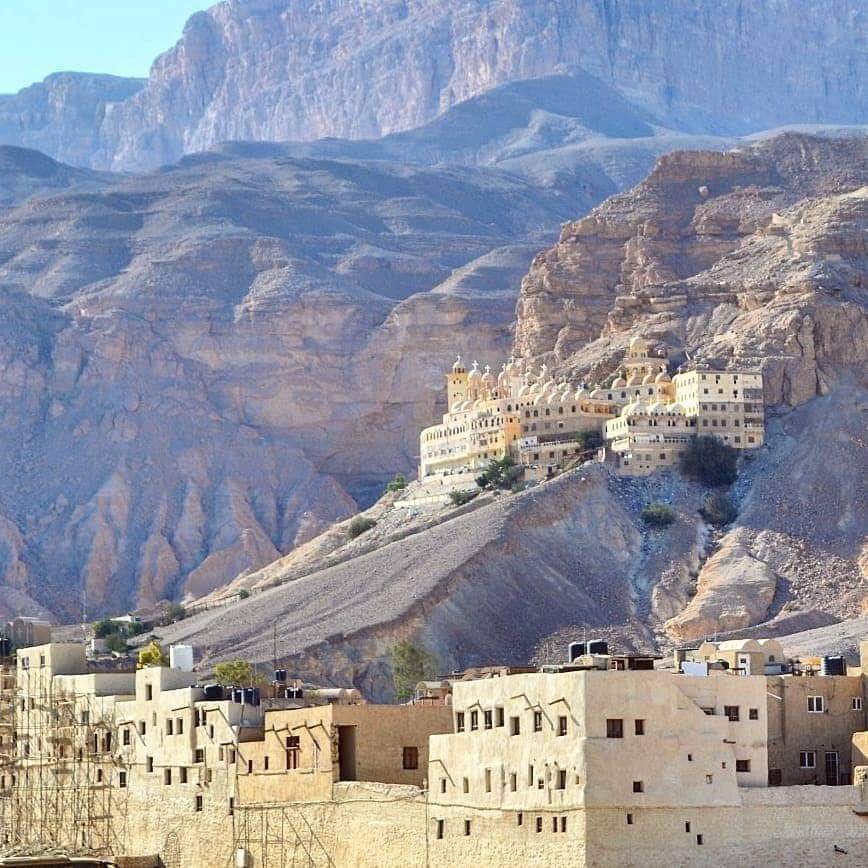
The Origins of Monasticism in Egypt
The origins of monasticism in Egypt can be traced back to Saint Anthony the Great, often regarded as the founder of Christian monasticism. In the 3rd century CE, Saint Anthony retreated into the Egyptian desert to lead a life of solitude and prayer, and his way of life inspired many to follow. This marked the beginning of the Egyptian monastic tradition, which flourished in the deserts surrounding the Nile. Over time, monasticism in Egypt evolved into a complex system of communities dedicated to prayer, meditation, and religious devotion. The Egyptian monasteries became vital centers of spiritual learning and practice and played a crucial role in the development of Christianity in both Egypt and the wider Christian world. Monastic life was not just about asceticism; it was a form of deep engagement with the divine. Monks in Egypt sought to live out the teachings of Christ in simplicity and humility. Many of the monasteries were built in secluded desert locations, such as the Wadi Natron, which became the heart of Egyptian monasticism. The architecture of these monasteries was simple but deeply symbolic, reflecting the monks' desire to retreat from the distractions of the world and focus on the eternal.
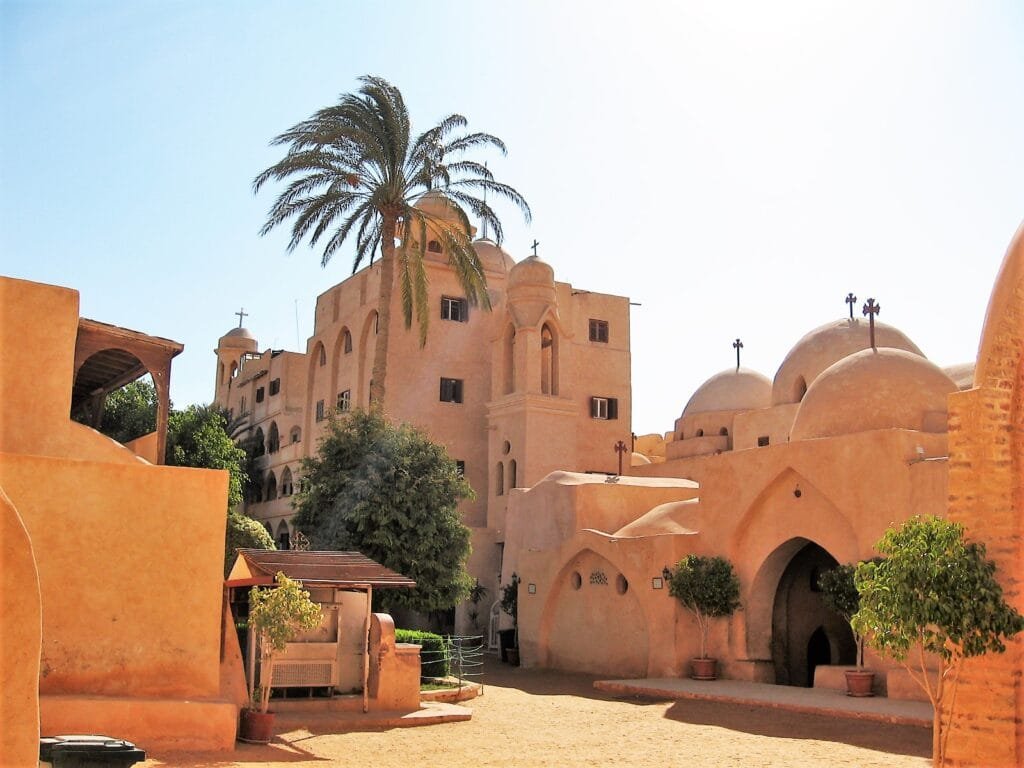
The Monasteries of Wadi Natron
One of the most famous regions for ancient monasteries in Egypt is the Wadi Natron desert, located around 100 kilometers north of Cairo. This area is often referred to as the “Monastic Valley” due to the concentration of early Christian monasteries that still stand today. Wadi Natron was a center for monasticism from the 4th century onwards and became home to numerous important monasteries, some of which remain active to this day. The Monastery of Saint Macarius is one of the most well-known and historically significant in Wadi Natron. It is named after Saint Macarius the Great, who was one of the most influential figures in early Christian monasticism. The monastery’s walls are adorned with ancient frescoes, and its peaceful surroundings make it a place of quiet reflection and prayer. Another important site in Wadi Natron is the Monastery of Saint Bishoy, named after a revered monk who lived a life of asceticism and was known for his dedication to Christian teachings. The Monastery of the Syrians is another important stop in Wadi Natron, with a history dating back to the 6th century. This monastery has stunning examples of Coptic art and architecture, including murals and inscriptions that depict the lives of saints and biblical stories. Wadi Natron offers visitors a chance to step back in time and experience the spiritual sanctity that has been preserved for centuries in these desert communities.
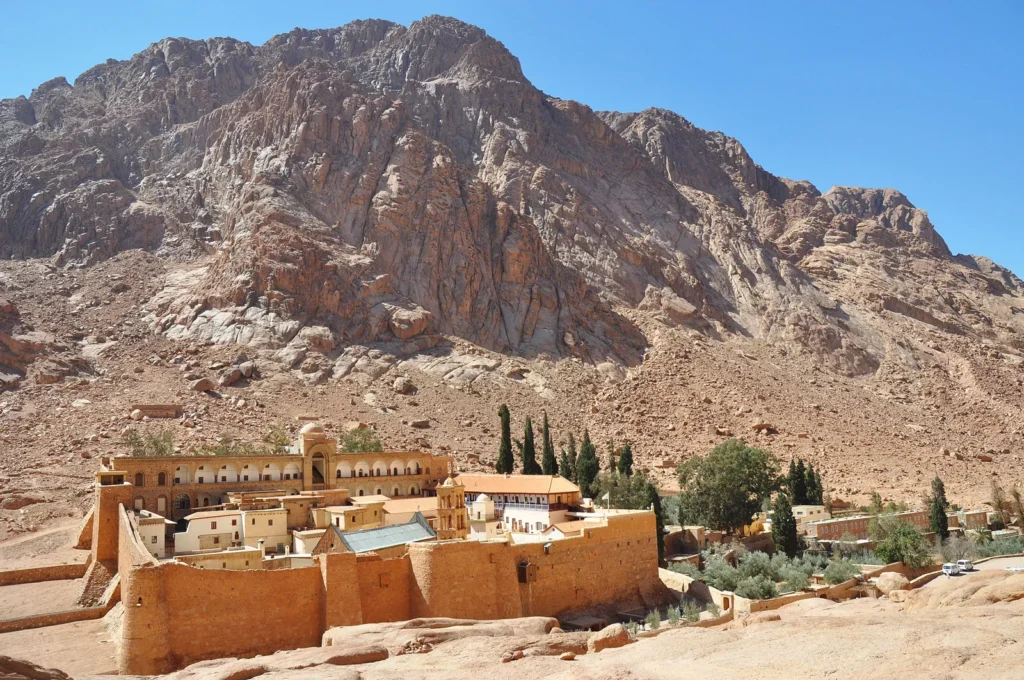
The Monastery of Saint Catherine: A UNESCO World Heritage Site
Located in the Sinai Peninsula, the Monastery of Saint Catherine is one of the oldest continuously inhabited monasteries in the world and is considered one of Egypt’s most iconic religious sites. Built between 548 and 565 CE, this monastery is dedicated to Saint Catherine of Alexandria, a Christian martyr who was known for her unwavering faith. The Monastery of Saint Catherine is located at the foot of Mount Sinai, where Moses is said to have received the Ten Commandments. The monastery is renowned for its stunning architecture, including its high walls and the impressive Saint Catherine's Chapel, which contains a treasure trove of early Christian icons and manuscripts. The library at the monastery is one of the oldest and most important in the world, housing thousands of ancient texts and manuscripts, many of which are invaluable to scholars studying early Christianity and monasticism. One of the most remarkable features of the Monastery of Saint Catherine is its location. Surrounded by rugged mountains and desert landscapes, the monastery offers breathtaking views and a serene atmosphere. It has long been a site of pilgrimage for Christians, particularly for those who seek a deeper connection to the early Christian faith.
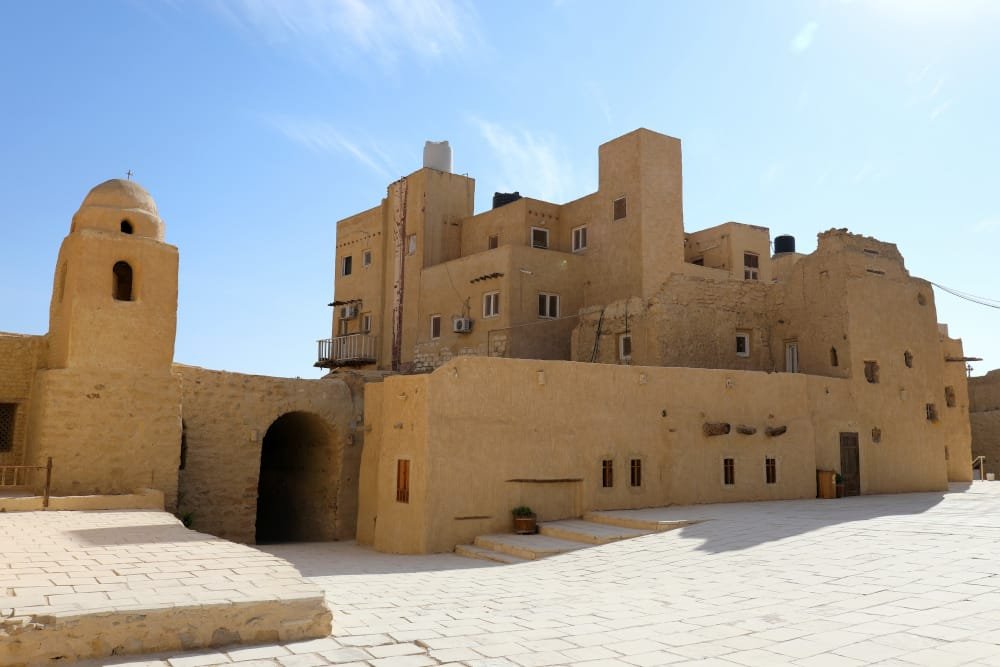
The Monasteries of the Eastern Desert
In addition to Wadi Natron, Egypt’s Eastern Desert is home to several other ancient monasteries, including the Monastery of the Holy Virgin at the Red Sea and the Monastery of Saint Paul the Hermit. The Monastery of Saint Paul, founded in the 4th century, is located near the Red Sea and is one of the oldest monastic sites in Egypt. The monastery is dedicated to Saint Paul the Hermit, one of the earliest Christian ascetics, and it remains an active site for monks and pilgrims. The Monastery of Saint Anthony, located near the Red Sea in the Eastern Desert, is another key site. Saint Anthony is often considered the first Christian monk and his monastery is built in a remote location, offering a tranquil retreat for those seeking spiritual reflection. This monastery features a number of beautiful frescoes and Byzantine icons, which reflect the monastic lifestyle and the devotion of the early Christian community.
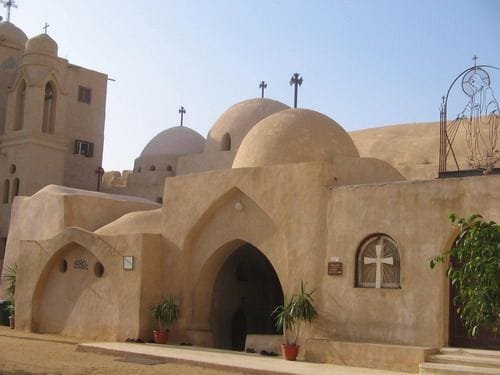
The Spiritual Experience: A Visit to Egypt’s Ancient Monasteries
Visiting Egypt’s ancient monasteries offers more than just a historical journey—it provides an opportunity for spiritual reflection and a deep connection to Egypt’s Christian heritage. Many of these monasteries remain active places of worship, with monks continuing the monastic traditions of prayer, fasting, and meditation. Visitors to the monasteries can experience the tranquility of these sacred spaces, where time seems to stand still amidst the vast desert landscapes. The simplicity and beauty of the monasteries reflect the essence of the Christian monastic ideal—devotion to God, a retreat from worldly distractions, and a life dedicated to service and prayer. For those interested in ancient Christian history and religious practices, a visit to these monasteries offers invaluable insight into Egypt’s role as a key center of early Christian monasticism. The monasteries are not just architectural wonders—they are living testaments to the enduring power of faith and the ongoing spiritual practices that have shaped Egypt for centuries.
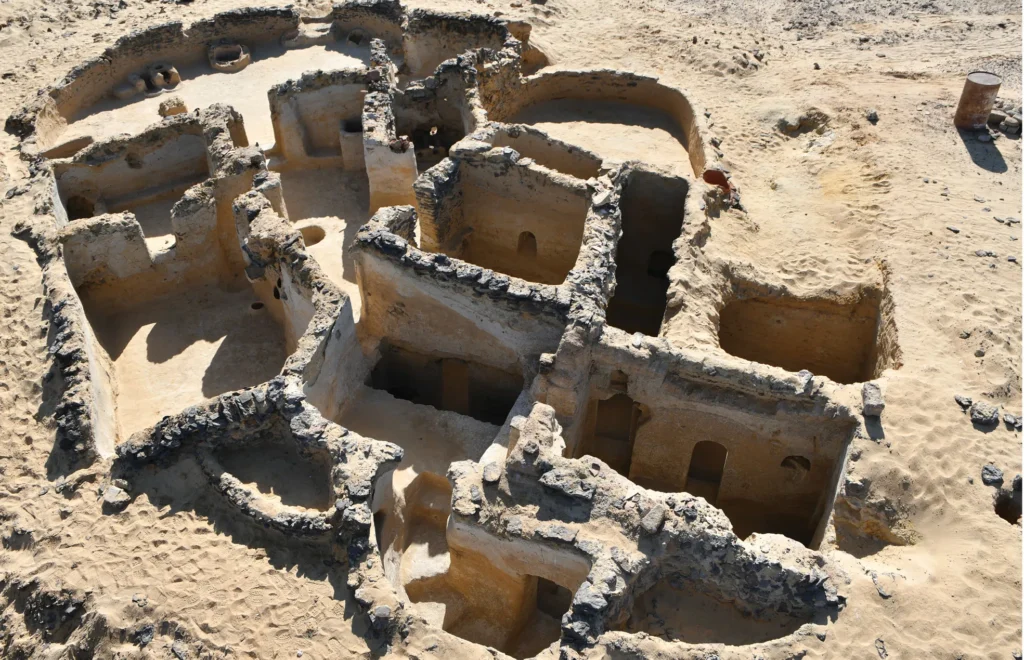
Conclusion
Exploring Egypt’s ancient monasteries is a profound journey into the heart of Christian history and spirituality. From the peaceful desert retreats of Wadi Natron to the iconic Monastery of Saint Catherine at Mount Sinai, each monastery offers a unique glimpse into the monastic way of life that has influenced Christian thought and practice for centuries. Whether you are interested in religious history, architecture, or simply seeking a place of peace and reflection, Egypt’s ancient monasteries provide a sacred and enriching experience that connects visitors with a rich cultural and spiritual legacy.


